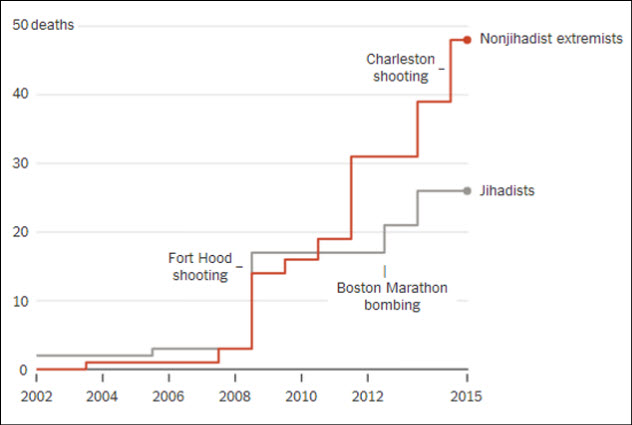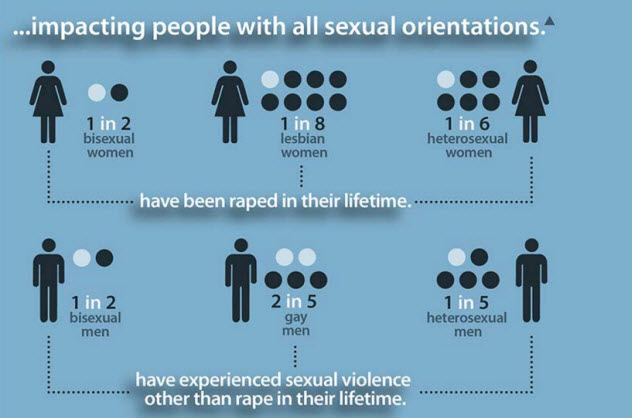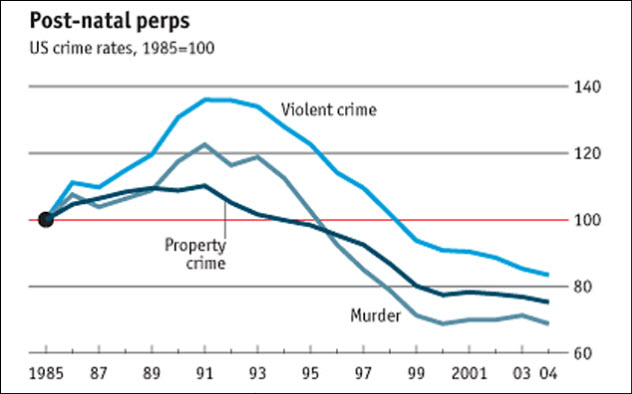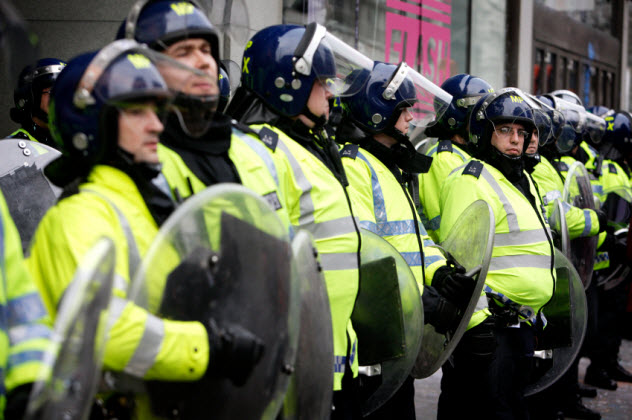 Weird Stuff
Weird Stuff  Weird Stuff
Weird Stuff  Mysteries
Mysteries 10 Tragic Disappearances and Deaths in Joshua Tree National Park
 History
History 10 Ways Childhood Really Sucked in the Old West
 Music
Music 10 Name Origins of Famous Bands from the 1990s
 Religion
Religion 10 Biggest Turnarounds by the Catholic Church
 Weird Stuff
Weird Stuff 10 Unbelievable Times Laws Had Unintended Consequences
 Humans
Humans Ten Historic Women Who Deserve Way More Credit Than They Got
 Movies and TV
Movies and TV 10 Films That Spawned Major Lawsuits
 History
History Ten Times Towns Were Wiped Off the Face of the Earth
 Creepy
Creepy 10 of the Most Disturbingly Haunted Public Houses in the UK
 Weird Stuff
Weird Stuff 10 Niche Subcultures That Are More Popular Than You Might Think
 Mysteries
Mysteries 10 Tragic Disappearances and Deaths in Joshua Tree National Park
 History
History 10 Ways Childhood Really Sucked in the Old West
Who's Behind Listverse?

Jamie Frater
Head Editor
Jamie founded Listverse due to an insatiable desire to share fascinating, obscure, and bizarre facts. He has been a guest speaker on numerous national radio and television stations and is a five time published author.
More About Us Music
Music 10 Name Origins of Famous Bands from the 1990s
 Religion
Religion 10 Biggest Turnarounds by the Catholic Church
 Weird Stuff
Weird Stuff 10 Unbelievable Times Laws Had Unintended Consequences
 Humans
Humans Ten Historic Women Who Deserve Way More Credit Than They Got
 Movies and TV
Movies and TV 10 Films That Spawned Major Lawsuits
 History
History Ten Times Towns Were Wiped Off the Face of the Earth
 Creepy
Creepy 10 of the Most Disturbingly Haunted Public Houses in the UK
10 Highly Controversial Statistics From The Culture Wars
They say that truth is the first casualty of war, and the culture wars are no exception. Often, though, its death isn’t deliberate. With any highly emotive issue, it can be difficult to sort the facts from the theories, the hard truth from the exaggerations. The following theories all use real data to reach their controversial conclusions. Whether you find their arguments persuasive is up to you.
10 1 In 3 Men Would Potentially Commit Rape

In 2015, the journal Violence and Gender published a shocking article. A small study had reported that nearly one in three college men would rape a woman if they thought they could get away with it.
The statistic attracted considerable attention, not least because the respondents only said that they would rape a woman if the emotive word “rape” was missing from the question. From a sample size of 86 men, 32 percent said they would “use force” to obtain sex from a woman.
On the other hand, only 14 percent were willing to say that they would “rape” a woman if there were no consequences. The researchers theorized that potential rapists have the ability to see their own actions in a kinder light, allowing them to commit their crimes without pangs of conscience. In light of campus rape problems, the study was reported widely.
Some experts took issue with the methodology, arguing that it drew false conclusions. The study authors used a five-point scale for their questions on rape, where 1 meant “very unlikely” and 5 meant “very likely.”
Those who answered with a 1 were considered to have said they would not use force to have sex with a woman. Those who answered with 2–5 were considered to have said they would.
Critics argued that this was inaccurate and that only those who answered with a 4 or 5—a low percentage—should have been included in the controversial “one in three” figure.
9 40 Percent Of Domestic Violence Victims Are Male

Domestic violence is usually seen as an issue that affects women. That’s why it is so powerful to learn that men make up 40 percent of domestic violence victims. This statistic turns our preconceptions on their heads and makes a shocking point about abuse and gender.
The statistic first came to prominence in 2010 because of a campaign by UK men’s rights group Parity. After analyzing data from the British Home Office and the British Crime Survey, they found that men made up on average 40 percent of the victims of domestic violence in the years 2004–09.
In some years, it was as high as 46 percent. In some, it was as low as 38 percent. Supporters of the statistic argue that it highlights a real problem.
But not everyone agrees that the figure tells the whole story. The chief executive for Women’s Aid has argued that there are different definitions of domestic violence. While men make up 40 percent of victims in one-off cases, women are more likely to suffer multiple incidents over a long period of time. In cases with four or more incidents, women make up 89 percent of victims.
The statistic also caused some controversy because many male victims of abuse are in same-sex relationships. Women’s groups argued that Parity was therefore wrong to suggest that women frequently abuse men.
8 Women Are Just As Likely To Abuse A Partner As Men

In 1975, the National Family Violence Survey by two sociologists made an interesting discovery. On questions about whether they had ever hit a spouse, women and men replied affirmatively in roughly equal numbers. They also reported getting hit in equal numbers.
Follow-up surveys set out to discover if the women were acting in self-defense. But again, similar numbers of men and women admitted to starting the fight and throwing the first punch.
In a 2010 article, one of the authors of the original study concluded from these statistics that women have similar motives for domestic violence as men. Namely, control and coercion. Supporters of the research say that this demonstrates that women are as capable of abuse as men.
Others have argued that the researchers’ methodology was flawed. Their papers used the Conflict Tactics Scale (CTS) as a way to measure intimate violence. CTS has been criticized for not measuring things like coercion or nonviolent forms of abuse and for leaving out sexual assaults. Critics also say that it doesn’t count violence by ex-partners. So women who are assaulted in revenge attacks are not counted in the statistics.
7 Right-Wing Terror Is Deadlier Than Islamist Terror

Since 9/11, terrorism may have become the biggest hot-button topic in America. Fairly or unfairly, it is currently seen by some as synonymous with “radical Islam.”
Hence the shock that accompanied a New York Times article on terrorist ideology in mid-2015. The newspaper claimed that an analysis of terror attacks on US soil in the post-9/11 era showed that right-wing extremists had claimed more lives than Islamists.
The tally came from a Washington research institute called New America. From September 12, 2001, until mid-2015, they found that 74 Americans had died in terror attacks. Of those people, 48 were murdered by right-wing extremists and 26 by Islamic extremists. Following the San Bernardino shooting, the number of murders by Islamic extremists jumped to 40 from 26.
The New York Times article also noted that the number of attacks carried out by right-wing extremists was 19, compared to seven by Islamic extremists.
The category of right-wing extremists includes white supremacists, neo-Nazis, “patriot” militias, and sovereign citizens. Sovereign citizens do not recognize or follow statutory laws at the federal, state, or local level.
Some people have argued that these statistics are misleading because they do not include the death toll from 9/11, one of the biggest events in American history. Once the 9/11 deaths are added, the odds change dramatically. They have also pointed out that the smaller number of Muslims than right-wingers in the US population means that individual Muslims are statistically more likely to engage in terror attacks.
6 1 In 5 US Women Have Been Raped

In 2010, the CDC began a project known as the National Intimate Partner Violence Survey. One of its earliest reports came with a shocking headline figure. Up to one in five American women reported that they had been raped in their lifetimes.
Even more had experienced some form of unwanted sexual contact. Approximately 44 percent of women and 23 percent of men had suffered some type of sexual violence.
The CDC subsequently identified sexual violence as a major health issue in modern America. Their survey data came from 12,000 interviews conducted in both English and Spanish and touched most major racial groups. It was considered to be thorough.
Nevertheless, some people detected flaws in the CDC’s research methods. Feminist writer Christina Hoff Sommers noted that the statistic would put US sexual violence on a par with the war-torn Democratic Republic of the Congo.
She argued that the CDC study let the researchers define what counted as rape instead of the interviewees. Women who had sex while drunk but lucid were conflated with those who had been penetrated while they were too drunk to give consent.
Instead of the 3.7 million victims identified in the CDC survey, Sommers believed that the real number was closer to the 188,000 rapes recorded by the Bureau of Justice Statistics.
5 1 In 5 Women Will Be Sexually Assaulted On Campus

In 2007, the US Department of Justice released their Campus Sexual Assault Study. It carried one eye-catching statistic that has become famous: One in five women experiences sexual assault on campus.
In the nearly 10 years since then, other studies have reported similar findings. The latest was published in 2015 and focused on elite universities. Using a sample size of 150,000 students from 27 schools, this study appeared to confirm that the one in five ratio was accurate. In fact, their rate was slightly higher at 23 percent, which led some people to round up the statistic to one in four women.
Some critics, like Christina Hoff Sommers, contend that both of these figures are misleading. Sommers argues that such surveys suffer from selection bias, where the women who respond are the ones who would have naturally strong feelings about the survey.
This could potentially skew the results. Sommers has also argued that the 2007 Campus Sexual Assault Study conflated consensual sex while drunk with nonconsensual sex while drunk, which was redefined as rape.
Others have called the one in four figure misleading, saying that only 11 percent of the women in the study “were assaulted in a way that is consistent with criminal definitions of rape or sodomy.” A much higher percentage were fondled or received unwanted kisses, unpleasant experiences that might not pass the legal standard for sexual assault in a court of law.
The Campus Sexual Assault Study also used a controversial definition of “sexual harassment.” For example, being repeatedly asked out to dinner after you’d said “no” and being told crude jokes that you found offensive were considered to be incidents of sexual harassment. However, these events were excluded from the one in four assault figure.
4 Abortion Cuts Crime By 30 Percent

Abortion is an inherently controversial topic. Still, perhaps no other study has been quite as controversial as the one by Steven Levitt and John Donohue of Freakonomics fame. By examining the historic drop in US crime rates throughout the 1990s, they concluded that legalizing abortion had cut all crime by up to 30 percent.
In 1973, the Supreme Court’s decision in Roe v. Wade was a de facto legalization of abortion. Levitt and Donohue claimed that the first group of babies born after the decision reached adulthood at the same time as a noticeable drop in the crime rate.
In addition, they found that some states had legalized abortion three years before the Supreme Court’s decision. In these states, the decline in criminal activity started three years earlier.
Finally, after abortion was legalized by Roe v. Wade, crime rates dropped sharply in states with high abortion rates (where it was easier to get an abortion) while it barely dipped in states with low abortion rates (where it was harder to get an abortion). Again, the difference in these crime rates occurred when babies born after the Roe v. Wade decision reached adulthood.
According to Levitt and Donohue, the logical conclusion was that legalized abortion results in fewer unwanted children, who in turn don’t grow up to be criminals.
Other people felt that their 30 percent figure was exaggerated. For example, two economists at the Federal Reserve Bank of Boston found a computer error that had skewed Levitt and Donohue’s data. By fixing the error, they found the effect of abortion on crime was reduced by half with the original data and by two-thirds using more recent data.
The Boston economists also criticized Levitt and Donohue for using the total number of arrests in their comparison rather than arrest rates per head (e.g., 5 arrests per 100,000 population). Controlling for that factor, the two Boston economists claimed that the impact of abortion on crime rates disappeared entirely.
For their part, Levitt and Donohue rejected the claims. Levitt says that his claims were based on a “collage of evidence” that controlled for multiple factors and that the computer error was related to one small part of the whole picture.
3 The UK Is Five Times More Violent Than The US

The US has a much higher murder rate than the UK. In fact, it is one of the highest in the Western world. Yet many have claimed that the UK is actually the more violent society.
A 2009 report in The Telegraph found that the UK was the violent crime capital of Europe. When compared to America, the UK was found to be five times more violent.
In 2010, the FBI reported that there were 403 violent crimes for every 100,000 Americans. The UK Home Office reported 1,797 offenses per 100,000 Brits, making Britain the more violent country.
These statistics have been used by gun rights advocates, who claim that stringent British gun control laws make UK citizens less safe. The numbers have also been used by those simply interested in comparing the two nations.
However, others have found problems with the figures. In the UK, police record a much wider range of behaviors as “offenses against the person,” including verbal assault and “causing alarm” without injury. The FBI does not track such incidents in America. Therefore, proponents of this view argue that the violent crime rates in these countries are impossible to compare.
On the other hand, there is still evidence that UK society is more violent as a whole. In the mid-2000s, Gallup concluded from a poll of 3,000 people that the UK is worse for crime than the US. In turn, the US is worse than Canada. British residents reported feeling significantly less safe than those of either of the other two countries surveyed.
2 A Woman Earns 77 Cents For Every Dollar A Man Earns

The wage gap is a focal point for modern gender activism. It is widely known that the average earnings for full-time work show that women as a whole earn 23 percent less than men. Nobody disputes this. The controversy arises when different interest groups try to explain this discrepancy.
The 23 percent gap does not account for differences in occupations, positions, education, or hours worked per week. This is important because women are more likely to work in professions with lower pay and fewer chances to progress, such as teaching children or psychology.
Men are more likely to work in highly paid professions like engineering or high finance. Once you account for these differences, the gap vanishes. But this is where the problem comes in.
Some groups, such as the National Organization for Women, claim that women’s career choices are influenced by a rigid, sexist culture. They argue that women are less likely to work in engineering because expectations and social pressures force them to accept more “feminine” roles with lower pay, not because they are less capable. While some women may indeed make it in male professions, they are the exceptions.
On the other side, people like Christina Hoff Sommers argue that American women are some of the best-educated, best-informed, and most determined females in the world. According to this side, it’s dismissive and at odds with reality to claim that women are manipulated by outside forces to take jobs that they don’t want. Women take on feminine careers largely because it’s their choice, which accounts for the discrepancy in earnings.
1 Male And Female Suicide Rates

Across the Western world, the male suicide rate is known to be significantly higher than the female suicide rate. In the UK, men are 3.5 times more likely to kill themselves than women. In the US, around 80 percent of all deaths by suicide involve male victims. It has been called a male crisis. Many men’s rights groups now campaign about suicide as a male issue.
However, the statistics have generated some controversy. Not because people dispute that more men die from suicide each year but because some campaigners claim that suicidal behavior actually affects more women. It’s known that 7 percent of women will attempt suicide during their lifetimes, compared to 4 percent of men.
However, since women are more likely to use pills (which have an extremely low success rate) and men are more likely to use guns or rope (which have an extremely high success rate), the stats are skewed toward male deaths.
According to some feminist writers, this shows that suicide is not a male issue. Some have even claimed that suicide is actually a women’s issue that is being misrepresented.
Campaigners on the other side argue that this doesn’t change the fact that significantly more men die each year at their own hands and that the real issue is how men talk about mental health problems. As with all of these statistics, we will leave it up to you to decide who—if anyone—is on the right side.








